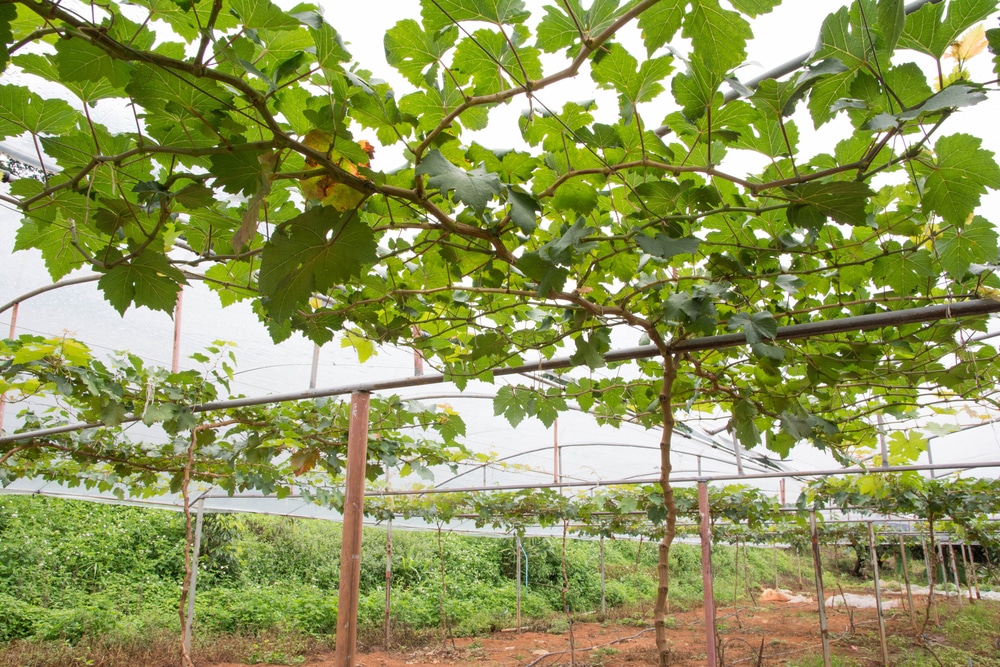

Spur pruning is easier to do than cane training.Grapevines don't need a ton of water, and wet soil can damage them. Give the vine enough water to keep the soil moist about 1 in (2.5 cm) deep.These places also tend to carry twine, pruning shears, and other tools you need to train vines. If you don't already have a grapevine or cutting to plant, check local gardening centers or place an order online.To keep the vine close to the post, tie it as soon as possible with binder twine or a similar type of weather-resistant string. Grapevines can be trained to grow out horizontally across a trellis, just like you see in vineyards. Once the tendrils grab on, you can remove the ties, and move them up higher to secure the new growth. Any green spots are parts that haven't matured yet and are going to be difficult to raise. Just be sure to secure them very loosely, otherwise the ties can strangle or cut into the vines as they get thicker. Choose a healthy cutting, which is a cane from an existing plant that has a uniform reddish brown color. Grapevines are climbing plants, so the vertical post serves as a base for your vine as it grows and expands across the trellis. When you purchase through links on our site, we may earn commissions at no cost to you.Grow a vine next to a vertical post on a trellis for a year. If you've positioned the trellis where the vine can soak in the sun, your vines will produce a nice supply of grapes (and/or jams and wines) for years to come. You're ready to plant your grape root! You can enjoy watching the progress of your vine's fruit, secure in the knowledge that your trellis posts are firmly planted in the ground and the wire is still taut. When the concrete has set, tie one end of the trellis wire to the secured loop, then do the same with the other wire end, pulling it taut as you attach it to its loop. Cut two 24-inch pieces of stainless steel wire and bend each into a U-shaped loop.īury the ends of the loop in the concrete, leaving the curved end protruding above the surface. Dig a hole in the ground beyond each end post, at least 18 inches deep and 12 inches in diameter. To keep your trellis wires from sagging, create a pair of anchors for each wire. If you're using wood instead, just nail or screw the cross pieces onto the posts. Then run your wire through the holes, leaving the two ends of each wire loose until you've created wire anchors. If your trellis runs east to west, drill the holes east to west. The quickest and most secure way to attach wire to your planted posts is to drill two holes in each post. The vines will wrap around them as they grow. You can also substitute thin pieces of wood for this step.
#Grape trellis install
Install two rows of wire that will eventually support vines and the grapes that grow on them-the top row about five feet above ground level, the bottom one 14 inches below the top wire. This can make a lovely shady spot for both you and any local wildlife to enjoy your yard on sunny days.


If you want to build an arbor, repeat this process as many times as you'd like to create an arch or a walkway over which vines can creep. If your soil is on the softer or sandier side, either bury them deeper or set them in concrete.

Place your posts about six feet apart and bury them two feet deep into the ground. That's less important if they're mounted in concrete, which will make them even more stable. If you plan to bury them in the ground, they should be treated to protect against rot. Your posts should be heavy and strong to support the weight of the cross-bars and your eventually copious crop.


 0 kommentar(er)
0 kommentar(er)
